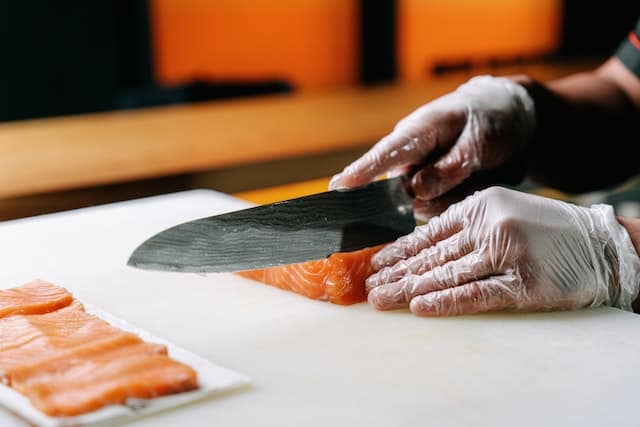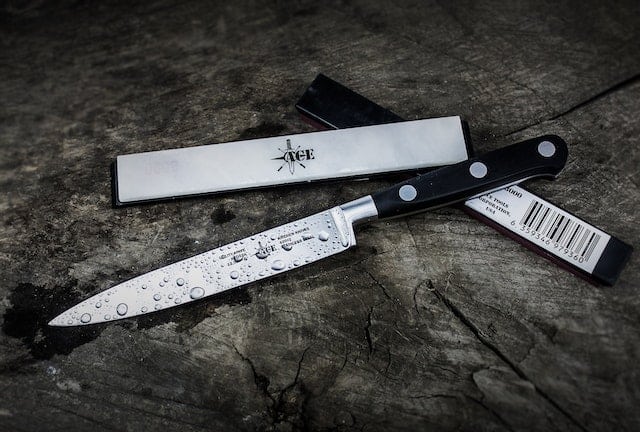Curious why do sushi knives have holes? The holes on a sushi knife are essential for creating thin, precise slices. The airflow created by the holes significantly reduces friction between the food and blade during slicing, which helps keep delicate foods from sticking or being crushed as they’re cut. In addition, this allows for more consistent cuts with each slice – something essential when preparing sushi dishes.
Let’s dive into some details on why do sushi knives have these mysterious holes.
What Are Sushi Knives

Sushi knives are one of the Japanese cuisine’s most distinctive pieces of cutlery. While all knives have a specific purpose, sushi knives have unique features that make them uniquely suited. Not only do these blades come with holes, but they are often made from high-grade steel and handcrafted by experienced artisans.
The reason why sushi knives have those small holes is to reduce the amount of resistance while cutting through food. Piercing the blade with small holes allows water to pass through, creating a smoother slicing motion. These tiny yet effective modifications help create thin slices of fish or vegetables essential in making various sushi rolls.
In addition to reducing friction during slicing, certain sushi knives also protect against potential injury caused by slipping or slipping off your food due to their ergonomic design.
Why do sushi knives have holes?
Historical Context: Sharpening Blades

This curious design feature has a fascinating history rooted in the ancient art of sword making. The practice of sharpening blades with holes or grooves dates back centuries when samurai warriors crafted their swords from scratch and needed to keep them razor-sharp for battle.
The technique used to create those signature slits is called “katana makes” and involves a grinding stone dusted with powdered charcoal and rubbed against the blade to create small indents and ridges. These tiny divots provide places for collecting dirt and debris, preventing them from sticking to the blade while cutting food like sushi. It also helps protect the blade from rusting or corroding due to exposure to acidic foods common in Japanese cuisine.
Functional Purpose of Holes
The holes create channels for water or air to pass through, and as the blade moves through food, these channels reduce drag and make it easier to cut cleanly. This is especially helpful when cutting delicate ingredients like fish or vegetables that tend to stick together or tear apart if too much pressure is applied during slicing.
The other primary purpose of the holes in sushi knives is aesthetic.
Other Uses for Holes
Holes are more than just a way to keep a blade sharp. While sushi knives traditionally have holes to minimize the friction experienced when cutting sushi, there are other uses for holes that can be found in everything from tools and equipment to clothing and jewelry.
For example, holes can be used as ventilation or an outlet for smoke or steam in tools such as irons, lighters, and pressure cookers. Holes also allow light materials to be hung from secure fixtures without putting too much strain on them. Additionally, some pieces of clothing, such as dresses, have strategically placed holes.
Conclusion
While some believe the holes in sushi knives are decorative, there is evidence that they serve a purpose. Primarily, these holes help to reduce the pressure on the blade when it is being used and also increase air circulation, which allows food not to stick to the knife as much.
Additionally, these small punctures can help prevent air bubbles from forming when sharpening the blade, which helps keep its sharpness over time.
Overall, while this unique feature of these knives may appear ornamental, it serves a practical purpose that supports and enhances their use in cutting delicious sushi rolls and other foods. The possibility of using a single tool for such varied tasks makes it no wonder why sushi knives are so popular and versatile!

